239+ Essential Homesteading Skills to Learn This Year

With the rise of cottage core and the farmhouse aesthetic, rural idyll is becoming ever more popular. Many dream of moving to the country where they can live a simpler and quieter life.
(As an Amazon Associate I earn from qualifying purchases. This means that if you purchase an item via a link on my website I earn a small commission at no extra cost to you.)
My journey toward homesteading began with that idyllic picture in my head, but soon grew to mean something much deeper and more important. My desire to take responsibility for myself and my family’s health, decrease our dependence on resources and supply chains that aren’t guaranteed, and a desire for freedom are front and center now.
This list of homesteading skills will hopefully provide an idea of what the homesteading lifestyle entails, and how you can embrace it right where you are. Whether you are an urban homesteader, a suburban homesteader, or you live on a 50-acre farm, this list can help you on your journey.
What should I know before homesteading?
First I think it’s important that you know what kind of homesteader you want to be. Do you want to learn a few old-fashioned skills and buy your food from local farms? Are you preparing to move to a plot of land where you can grow your own food and have a few animals? Or are you planning to go completely off-grid and try to be completely self-sufficient?
I’ve split this list into sections so that you can know which skills will be useful (or perhaps necessary) in whatever lifestyle you’re aiming for.
I think it’s also important to realize that homesteading is hard work. The average person’s lifestyle has become much more sedentary in the last century, and homesteading requires that we work for the most basic of needs. We as a culture are not accustomed to that!
Homesteaders grow or acquire whole, clean foods and prepare, preserve, and cook them from scratch. Instead of ordering their favorite shampoo on Amazon, they might make their own hair care products. These kinds of things allow us to avoid toxins and re-connect with life-sustaining basics – but they require a lot more effort.
If you’re not willing to put in the extra work, then homesteading might not be for you.
What is a homesteading lifestyle?

Homesteading is essentially pursuing self-sufficiency. There are many degrees of self-sufficiency of course, and you can be a homesteader without becoming completely and utterly self-sufficient.
Homesteaders have shifted their emphasis from consumption to production. They want to work with their hands and feel that they’re contributing real and profound value to their families and to the world.
From my own observation, I have found the homesteading community to be full of folks who want to know where their food comes from, who care about what they put on and in their bodies, and who believe that the satisfaction that comes from working with your hands is far more important than the convenience that comes from purchasing ready-made goods.
Because the heart of homesteading is about so much more than keeping goats and growing tomatoes, anyone can be a homesteader. You are not limited by your circumstances. Go ahead and bloom where you’re planted!
Homestead Anywhere
These skills are ones you can practice no matter where you live – whether you have land or not, livestock or not. Even those of you without gardens or animals can be small-scale homesteaders right where you are!
For those who don’t have land – you can try and connect with local farmers for produce, meat, and dairy, or simply start buying in bulk to save money and learn to preserve. There are a lot of ways to eat seasonally and take advantage of the health benefits of a homesteading lifestyle regardless of your living situation.
All the skills in this first list are ones I’m developing too. We don’t have our own land yet. Until we do, I am doing what I call “old-fashioned homemaking.” Almost everything homesteaders do within their homes could be defined as old-fashioned homemaking. It’s a great way for me to embrace the homesteading values and lifestyle right where I am, and I hope it will prepare me well for when I have a large harvest and my own animals.
Many of us simply want to become a bit more self-sufficient and rely less on others to do the work of caring for our own homes. This list covers that too!
Homesteading Begins in the Kitchen
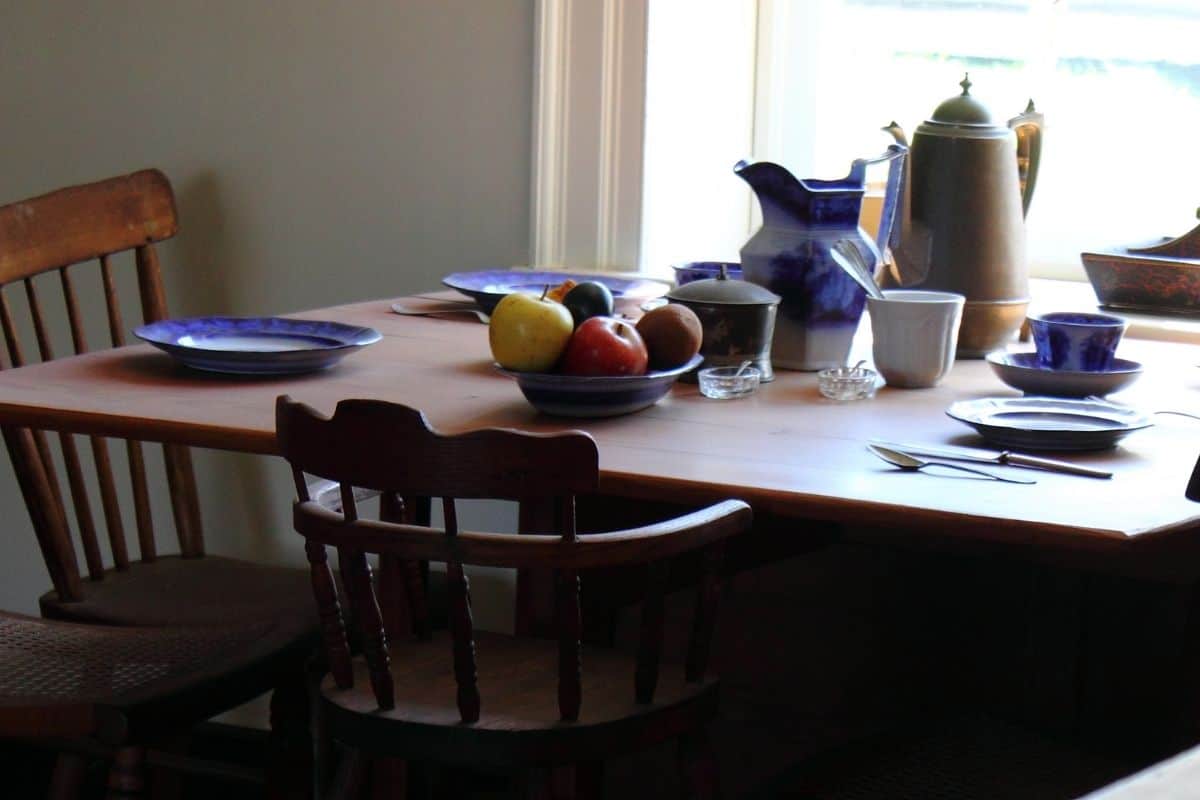
There’s a reason we find ourselves spending so much time in the kitchen. So much of homemaking and homesteading is keeping everyone fed and healthy. These homesteading skills are ones you can hone in any kitchen!
- Cooking from Scratch – any homesteader’s harvest needs to be made into food that’s ready to eat at every meal. Learning to cook tasty dishes from whole ingredients is imperative!
- Finding Local Food Sources – if you can’t grow/raise all your own food, then this is an essential part of supporting your local farming community and sourcing clean food.
- Baking Bread – this not only allows you to skip the bread aisle at the grocery store, it also allows you to cater to your family’s specific health needs. For those with a gluten intolerance, sourdough bread is usually much gentler on the gut. If your family is gluten free, you can bake a large variety of breads with gluten free flour. You can even bake gluten free sourdough bread!
- Make Homemade Starter Dough – once you have the basics of bread baking down, you can remove your dependence on store-bought rising agents (instant yeast, baking powder, etc) by cultivating your own starter.
- Pie Crust from Scratch – you need somewhere to put those beautifully home-canned pie fillings!
- Make Your Own Butter
- Water Bath Canning – preserve that harvest to eat seasonally all year round!
- Pressure Canning
- Curing & Smoking – make your own bacon and cured ham.
- Dehydrating
- Freezing Foods
- Fermenting Foods
- Vacuum Sealing
- How to Store Foods without Refrigeration (Root cellar/cold storage)
- Make your own wine/beer/cider
- Grind Your Own Whole Grains
- Preparing Raw Milk – I personally think eating and drinking raw dairy has positive health benefits that outweigh the risks. However, if you are purchasing or producing raw milk and you would rather not drink it raw, you’ll need to learn to pasteurize it.
- Make Your Own Cheese – start with soft cheeses that are a little easier, then move on to hard cheeses. Hard cheeses often require aging, special equipment, and extra ingredients. Get that foundation under you before investing in all the extras!
- Make Your Own Yogurt
- Make Hand-Cranked Ice Cream
- Render Tallow & Lard – these fats are less processed and healthier to consume than corn and soybean oils. Tallow can also be used in homemade beauty and skincare products!
- Use and Store Bacon Grease
- Make Your Own Vanilla Extract
- Practice Creativity and Frugality – use every last thing you buy at the store!
- Learn to Cook with Cast Iron – Cast Iron is a non-toxic non-stick coating, and it also lasts forever, so it’s a frugal option. (Find out how to Remove Rust from Cast Iron to bring that old pan back to life!) Cast Iron is the cookware you need for off-grid cooking. If you want to cook over a fire, you need cast iron! I also find that my food cooks more evenly on cast iron and tastes better.
- Cut Up a Whole Chicken – if you’re planning to either raise your own chickens for meat, or buy whole chickens from a local farmer, you’ll need to learn how to cut them up. Some recipes call for chicken breast only, and you’ll need to know how to take that bird apart!
- Roast a Whole Chicken – this is one of the easiest ways to cook a chicken, and once you learn how, it turns out delicious every time. And when you’ve picked off all the meat, you can use the bones for bone broth.
- Make Your Own Bone Broth – Bone broth is highly nutritious and rich in protein. I use it not only for soups but also to cook rice, quinoa, roasts, you name it. It’s a staple ingredient in a lot of what I cook. And it helps to use every last bit of the chicken.
- Composting – There are a lot of ways to do this, but vermicomposting is the best option if you live in a small space. You can even keep your compost bin under your sink!
- Seasonal Meal Planning – this can be difficult to get used to, but it’s a great way to enjoy food while it’s at its most flavorful and nutritious.
- Making Preserves
- Drying or freezing herbs
- Make Your Own Vinegar
- Reusing Citrus Peels
- Cooking on a Wood Stove – It’s wise to use renewable resources for your energy consumption, so cooking on a wood stove is an important skill to have! It may not be doable for those who are renting homes or apartments, but if it’s possible, go for it!
- Using an Animal Nose to Tail – This involves rendering fats and using organ meats as well as making broth from the bones.
- Discover New Recipes for Little-Used Cuts of Meat
- How to Identify Spoiled Food – when you’re using all real, clean food in your kitchen, it spoils more quickly due to lack of preservatives. You need to know when it’s no longer safe to eat!! The good news is – it can feed your compost, and help give your balcony or windowsill garden new life.
Other Homemaking Skills
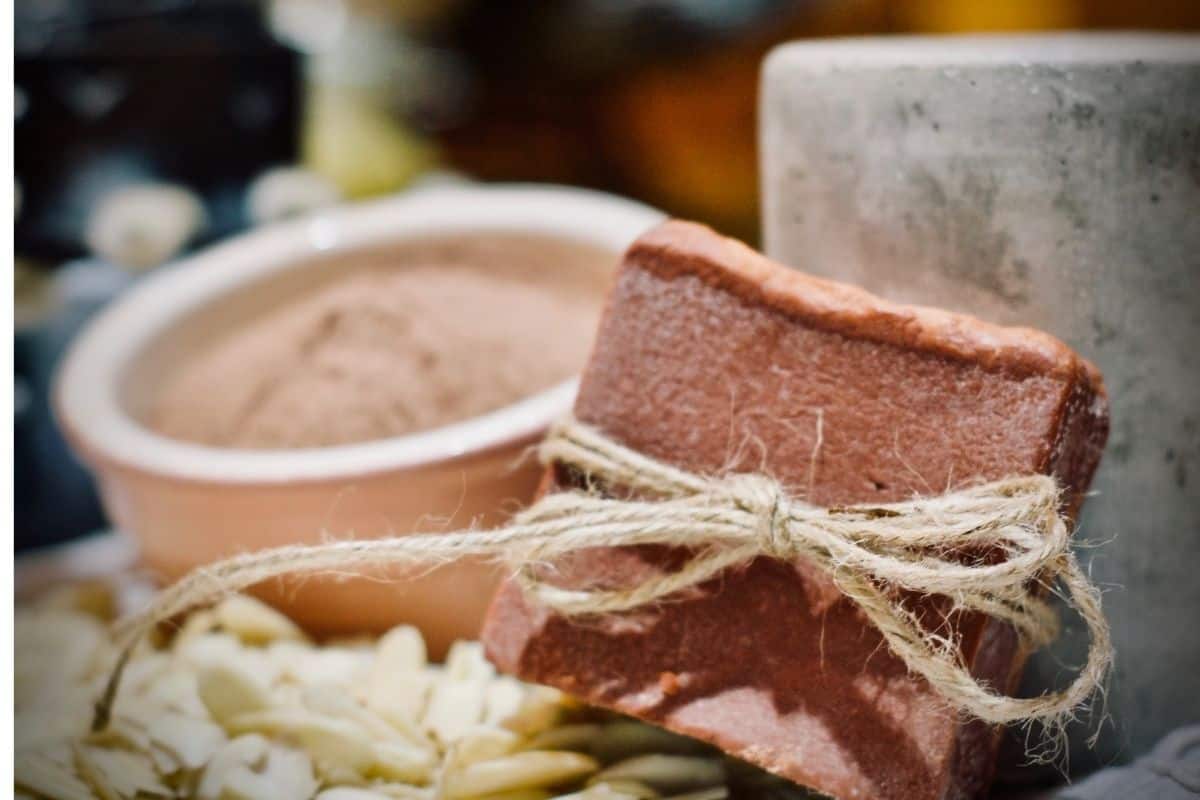
- Make Your Own Cleaning Products – this is a great way to control the ingredients and make sure you’re not inviting toxic chemicals into your environment.
- Homemade Skin Care Products – another great way to protect against toxic chemicals!
- Make Your Own Haircare Products
- Homemade Soap
- Make your Own Laundry Detergent & Softeners
- Learn to Sew by Hand
- Use a Sewing Machine
- Mend damaged clothes instead of throwing them away
- Knitting/Crocheting – Being able to knit sweaters and blankets, hats and scarves, etc. is extremely important when you’re trying to stay warm in the winter!
- Quilting
- Learn to Hand-wash your Laundry – this is one that I personally can’t do on a regular basis – especially with kids! It’s good to know how to do in a pinch, however, if your washing machine quits on you.
- Line-Drying Laundry – This is a great way to save on energy costs, especially when the weather allows for clothes to be dried outside. If you’re limited in outdoor space, you can dry your clothes on drying bars. There’s potential for significant energy savings if you quit using a dryer altogether!
- Reduce Waste – keep an eye on what you consume and dispose of. Consuming less and re-using things as much as possible is necessary to becoming more self-sufficient.
- Card Wool and Other Fibers – if you can’t raise your own fiber animals, you can buy raw wool on Etsy!
- Spin and Weave Wool and Other Fibers
- Basket Making
- Buy Secondhand – making use of Facebook Marketplace, Craigslist, or your local thrift shop is a great skill to develop. Not only does it save money, but when you buy older furniture the quality is often better. And if you have kids, buying their clothes secondhand is a great way to keep clothing costs down.
- Candle Making
- Broom Making
- Knowing Uses for Beeswax – candles, beauty products, skin care, furniture polish, etc.
- Repurpose and Recycle – Instead of hopping out to the store every time you think of something you could use at home, look around and see how you might be able to make use of what you already have.
- Live within Your Means and Get Out of Debt
- Know What You Can Live Without
- Make Pottery
- Sock Darning
- Make Your Own Paper
- Learn how to make natural dyes
Household Maintenance and Repairs
Learning how to do these things can save cash on frequent visits from handymen and plumbers.
- Clean your own chimney
- Basic Carpentry – for household repairs, and even furniture building
- Basic Plumbing – even just knowing how to plunge your own toilet can save a lot of headaches
- Using Basic Tools – small steps to decrease your dependence on others!
Find Your Own Food
Even without your own land to grow and raise your food, you could learn these skills to go out and find your food in the wild.
- Hunting Laws, Rules, and Regulations
- Learn how to humanely kill, gut, and clean an animal
- Butcher an animal and the proper cuts of meat
- Fishing
- Clean, fillet, and cook fish
- Make your own fishing lures or spears
- Foraging for medicinal plants
- Identifying Mushrooms – know which are edible and which are poisonous
- Identifying Native Plants
- Foraging for Wild Edibles
- Identifying Undesirable/Poisonous Plants
Natural Health & Wellness

Using herbs for healing is a great idea if you’re looking to become more self-sufficient. Don’t get me wrong, I am SO thankful for modern medicine. Back in pioneer days, many people died of diseases that are now easily treatable. I don’t advocate a complete rejection of modern medicine; however, I do think that we can too easily reach for over-the-counter or prescription remedies for minor ailments.
God created so many plants with medicinal properties. If you can grow them yourself, you can avoid unnecessary gut flora disruption, avoid unnecessary toxins, significantly increase your self-sufficiency, and save the pricey doctor trips for more serious illnesses.
- Extracting Herb Essence to make Essential Oils
- Make an Herbal Poultice
- Homemade Remedies
- Homemade Salve
- Learn Basic Medicinal Properties for Local Herbs and Wild Plants
- Make a Tincture
- How to Safely Remove a Tick
- Homemade Natural Mosquito Repellant
Gardening
- Grow windowsill herbs for cooking and healing
- Grow your own year-round salad – you can grow the ingredients for salad right in your windowsill and eat salad all year long!
- Hydroponics Gardening – Hydroponics allow you to grow plants without soil. This is an option for you if you can dedicate 5-6 feet to a hydroponics system. It’s also a great skill to have in case you find yourself on a homestead someday where the soil is not very healthy, or if your climate doesn’t allow you to grow all the crops you’d like to raise. It is important to note, however, that this method consumes quite a bit of electricity.
- Aquaponics Gardening – Aquaponics grows fish and plants together in the same process. Where hydroponics uses chemical nutrients, the nutrients for the plants in aquaponics comes from the fish in a process called the nitrogen cycle. Both aquaponics and hydroponics methods do consume quite a bit of electricity!
- Raise Microgreens
- Sprouting
- Container Gardening – if you have a small balcony, a rooftop, or simply a very small yard, container gardening is a great way to raise some fruits and vegetables in a more limited space.
Miscellaneous
- Using Charcoal
- How to Use Wood Ash
- Find Creative Ways to Make Money – becoming more self-sufficient often involves creating your own income streams rather than relying on employers to provide your income. Start looking into some side hustles that could perhaps one day turn into full time income!
- Heat your home with wood or other sustainable sources – again, you might be limited here if you live in a rental
Managing a Small Homestead
These skills are ones you could add on to those above if you have a little bit of land to work with.
Growing your own food
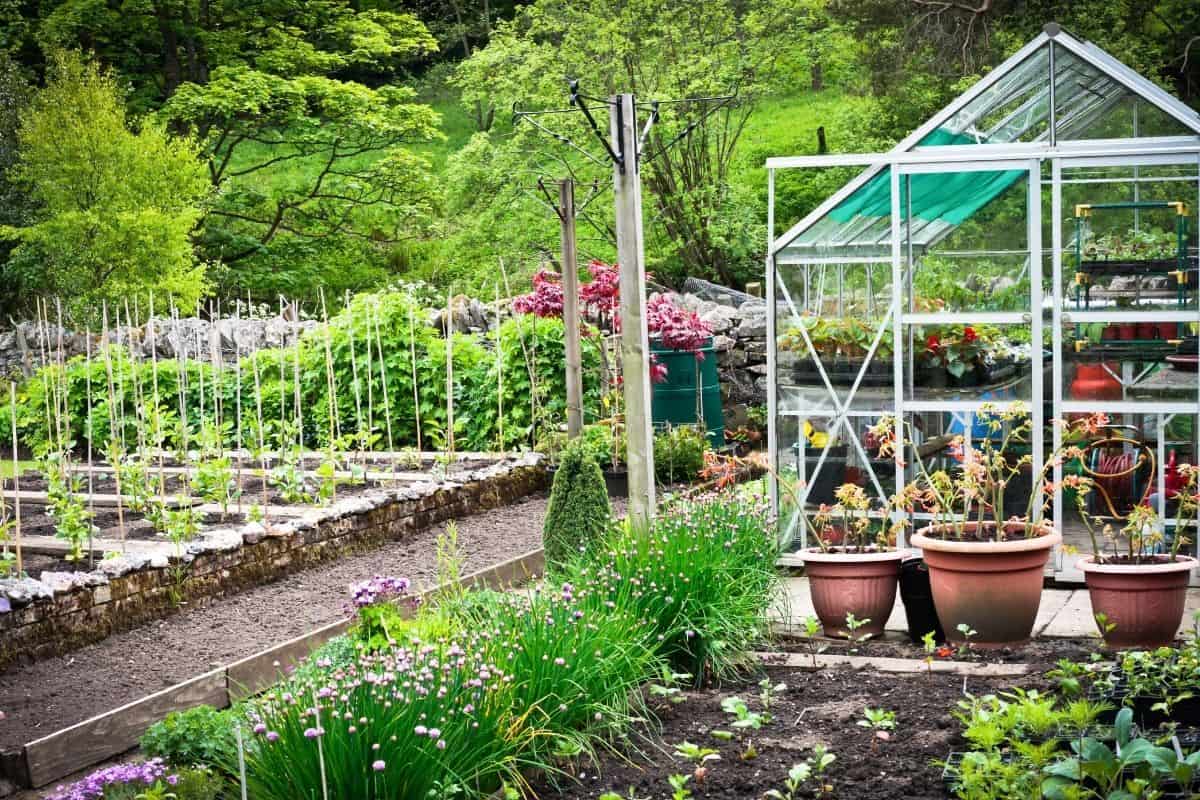
- Straw bale gardening – this is another way to make a raised bed. The soil, compost, and plants are housed inside the straw bale. This allows the plants to grow higher off the ground which is easier on your back. The straw bale also helps keep the soil warmer, which can extend the growing season. And, it’s cheaper than traditional raised beds!
- Make Your Own Greenhouse – this can extend the growing season of many crops by providing a more climate-controlled place for them to grow.
- Determining Hardiness Zones – figure out what plants are most likely to thrive in your location!
- Propagating Plant Cuttings – a great way to be more self-sufficient in your gardening
- Planting Trees
- Prune and Graft a Fruit Tree
- Identifying and Removing Weeds
- Natural Weed Control
- Soil Preparation
- Permaculture – This is perfect for homesteaders in that it focuses on self sufficiency by taking advantage of natural ecosystems.
- Raising Tomatoes
- Saving Seeds
- Harvesting
- Make and Use Leaf Mold
- Improve Soil
- How to Grow Plants from Seed
- How to Plant Trees
- Natural Garden Pest Control
- How to Attract Pollinators – this can save essential populations, and it also helps your plants!
- Back to Eden Gardening
- How to Test Seeds for Germination
- No-Till Gardening
- Plant Perennials for Food Security
- Build an Arbor and Plant Grapes
Raising Small Livestock

- Beekeeping – you can harvest your own honey, which has healing properties, can help control seasonal allergies, and is a great sugar replacement! You can also harvest your own beeswax, which can be used to make your own skincare, soap, and many other things.
- Chicken Keeping – for eggs, or for meat. Or both!
- How to tell if your chickens are molting
- Identify and manage a broody hen
- Processing a Chicken (killing, plucking, cleaning)
- Make Your Own Chicken Feed
- Build Your Own Chicken Coop
- Build a Chicken Tunnel – put those chickens to work fertilizing and weeding for you!
- Candle eggs so you can tell if they are fertilized
- Raising Rabbits – you can raise rabbits for meat, or you can raise angora rabbits for their fibers.
- Dealing with Fowl Predators
- Keeping waterfowl – this includes birds like ducks and geese. Like chickens, they can be raised for meat and eggs, but they are more disease-resistant than chickens.
- Incubate and Hatch Eggs
Miscellaneous
- Tapping Maple Trees – This is a great way to harvest your own maple syrup if you have maple trees on your property
Homesteading with “Big Land”

“Big Land” probably has different definitions for everyone. While I’m not an expert on livestock care, I would personally want to have at least 3 acres before I tried to keep larger animals like cows and sheep. You might even need more!
These homesteading skills are ones you can develop when you have lots of land to work with. These will help if you want to really try and be more self-sufficient, particularly in producing your own food!
Land and Property Maintenance
- Building and Maintaining fencing
- Make Your Own Smokehouse – smoking is one of the oldest methods for meat preservation. A great way to preserve the meat from your home-raised livestock!
- Keeping a Barn
- Make and apply whitewash
- Learn how to repair a roof
- Growing Fodder – this is food, particularly dried feed or hay, for cattle and other livestock
- Know How to Cut, Bale, and Stack Hay
- Cutting Trees Properly
- How to Fell a Tree
- Driving Manual Transmissions
- How to Drive and Operate Heavy Machinery (Tractor)
- How to Hook Up and Back a Trailer
- Intensive Grazing for better pasture management
- Learn Biodynamic Farming Practices
- Understanding Holistic Management – How does your approach to farming affect your livestock, surroundings, and nature as a whole?
- Learn how to clear pasture and brush
Larger Livestock Care
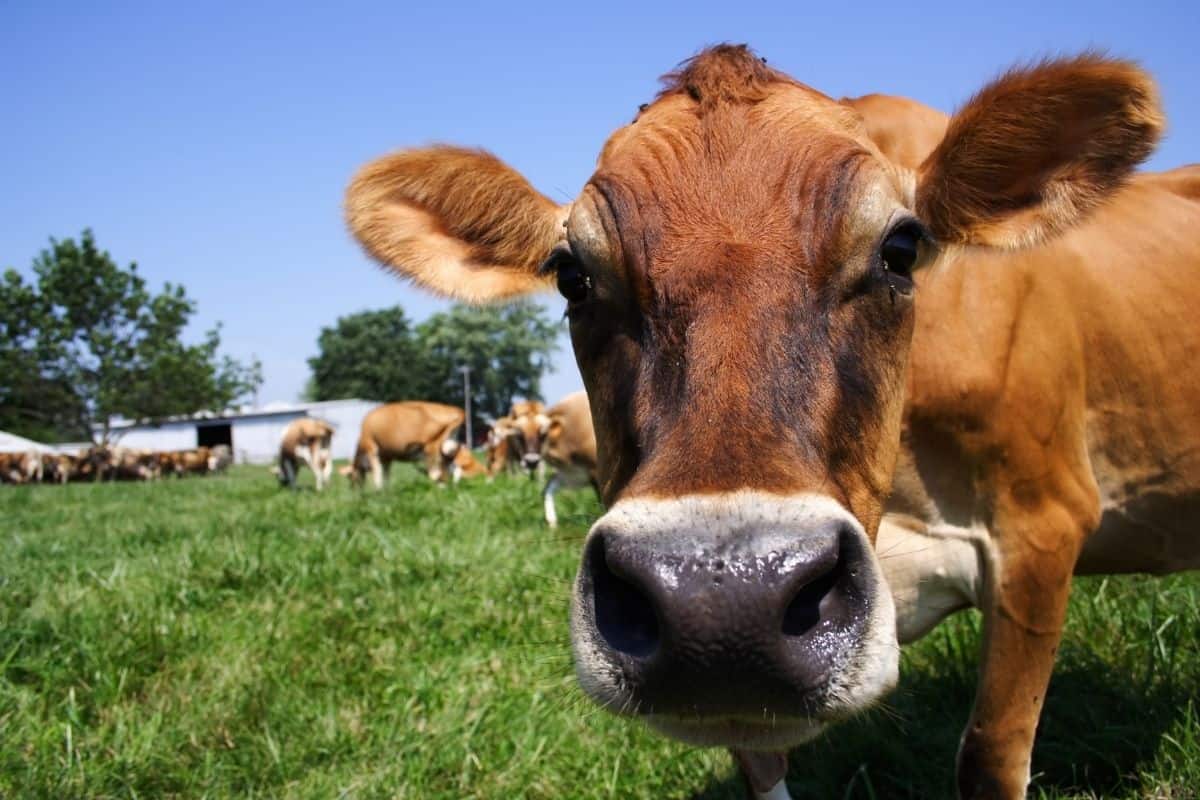
- Grow your own animal feed
- Farrier Skills – saves money if you keep horses!
- Halter-break and train an animal
- Raising Dairy Livestock (cows, goats, sheep)
- Milking Dairy Livestock
- Handling Raw Milk – know when it spoils, how it needs to be stored, etc.
- Livestock Breeding
- Raising Heritage Breeds
- Livestock Birthing
- Newborn Livestock Care
- Learn Basic Livestock Health Care – giving an animal an injection, for example, is easy enough to learn yourself and you can save a vet bill!
- Basic Wound Care for Animals
- Recognize when your animal needs a vet.
- Restraining Livestock
- Trapping flies
- Trapping Mosquitos
- Training Livestock Guardians – Dogs are the most common livestock guardians, but donkeys can provide a loud “hee-haw” when they sense predators. Llamas are also excellent livestock guardians. They will attack and kill predators, they don’t need to live in a herd, they’re pretty low maintenance, and they live for 20-30 years!
- Trim the feet of your goats and sheep
- Know how to humanely euthanize an animal
- Shearing Sheep or other fiber animals like llamas and alpaca
- Clean and process wool after shearing
Miscellaneous
- Establishing Community – I would say this is an often overlooked skill of homesteading. The majority of people will never be truly and exclusively self-sufficient. All you need to do is take a look at the length of this list and you can see how difficult that could be to accomplish! When we find ourselves in need, having a good relationship with our neighbors is indispensable. Think “Community Sufficiency” rather than “Self-Sufficiency.”
- Recognizing Need – Again on the theme of community. If we are too focused on ourselves in trying to develop self-sufficiency we can miss crucial opportunities to help meet the needs of others.
Hard Core Off-Grid Survival
I know many homesteaders do not try to live fully off-grid lifestyles, but there are some who wish to be completely self-sufficient. These skills are ones that are vital if your goal is not to rely on anyone else for any of your needs!
Energy Use
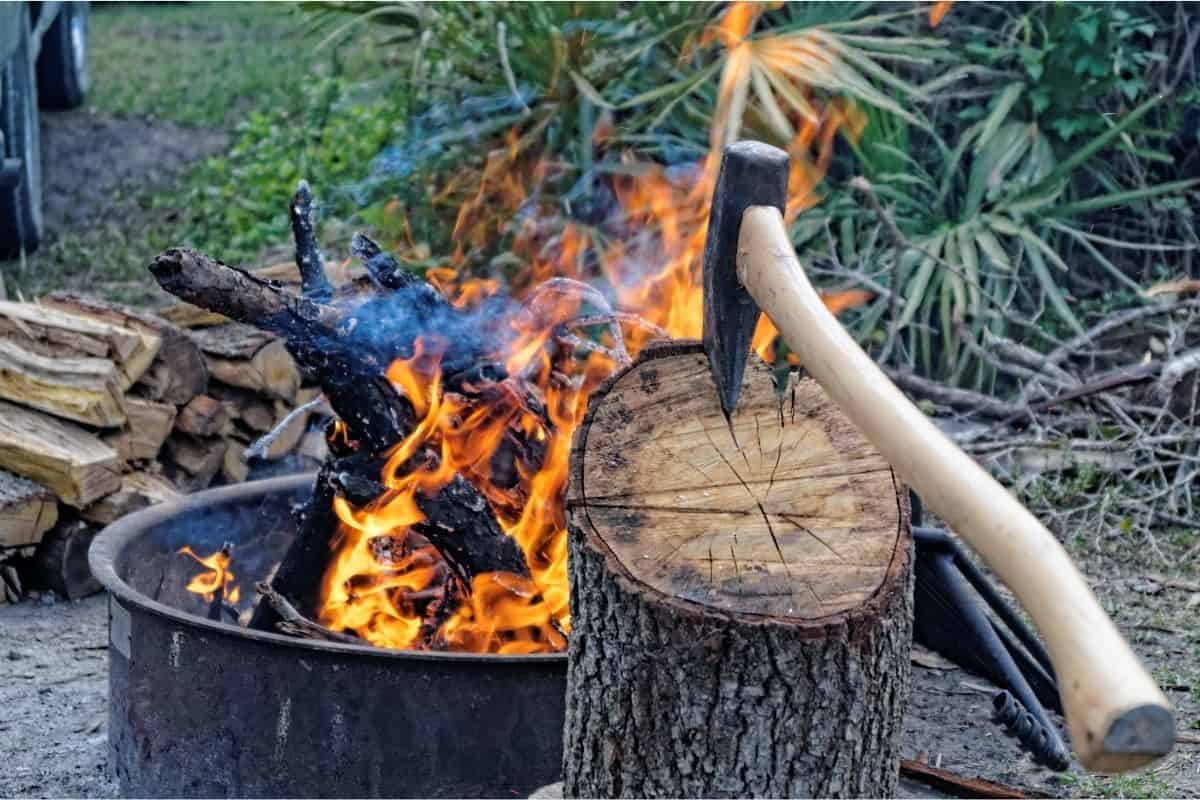
- Recognize good firewood
- Safely cut and split firewood
- Starting and extinguishing a fire
- Make Your Own Fire Starter
- Start Fire without Matches
- Making waterproof matches
- Make Your Own Oil Lamp
- Make Your Own Solar Lamp
- Build DIY Wind Turbine
- Make an Outdoor Rocket Stove
- Build DIY Solar Panel
- Keeping Warm in Winter
- Keeping Cool in Summer
- Know how to use non-electric lighting
Food and Water
- Bake without an Oven (cook over the fire, etc)
- How to Find Water and Make It Safe for Drinking
- Harvesting Rainwater – this one is a good one to learn even if you aren’t trying to go off-grid – it can keep your gardens watered and your water bill under control.
- Digging a Well
- Firearm use, safety, and storage (for hunting and protection)
- Make your own ammunition
- Tracking
- Make Your Own Dog/Pet food
- Make Your Own Still Water (water with no visible current or stream)
- Tapping gray water (domestic waste water)
- Water Dowsing
Skills and Handicrafts
- Cobbling – that’s right – if you’re going to be totally self sufficient you have to make your own shoes!
- Skinning, tanning, and leatherworking
- Tying Knots
- Rope and Net Making
- Blacksmithing Skills
- Learn basic metal working skills and welding
First Aid
- Cleaning and Dressing Wounds
- Stopping Bleeding
- CPR
- Setting a Splint
- Heimlich Maneuver
- Stitches
- Support a Sprain
- Treat Shock
- Spot a Concussion
- Treat Hypothermia
- Treat Hyperthermia
- How to Deliver a Baby
Potty Time
- Learn how to install/use a composting toilet
- Grow Toilet Paper – Hahahaha, I know this one sounds weird. But actually, we’re pretty dependent on toilet paper. We found this out much to our chagrin not very long ago! Dombeya and Mullein are big leaf plants that can be used as toilet paper, face wipes, or bandage wraps. Good to have an alternative, right?
- Build a Shower without Power
- Winter Plumbing
Staying Safe
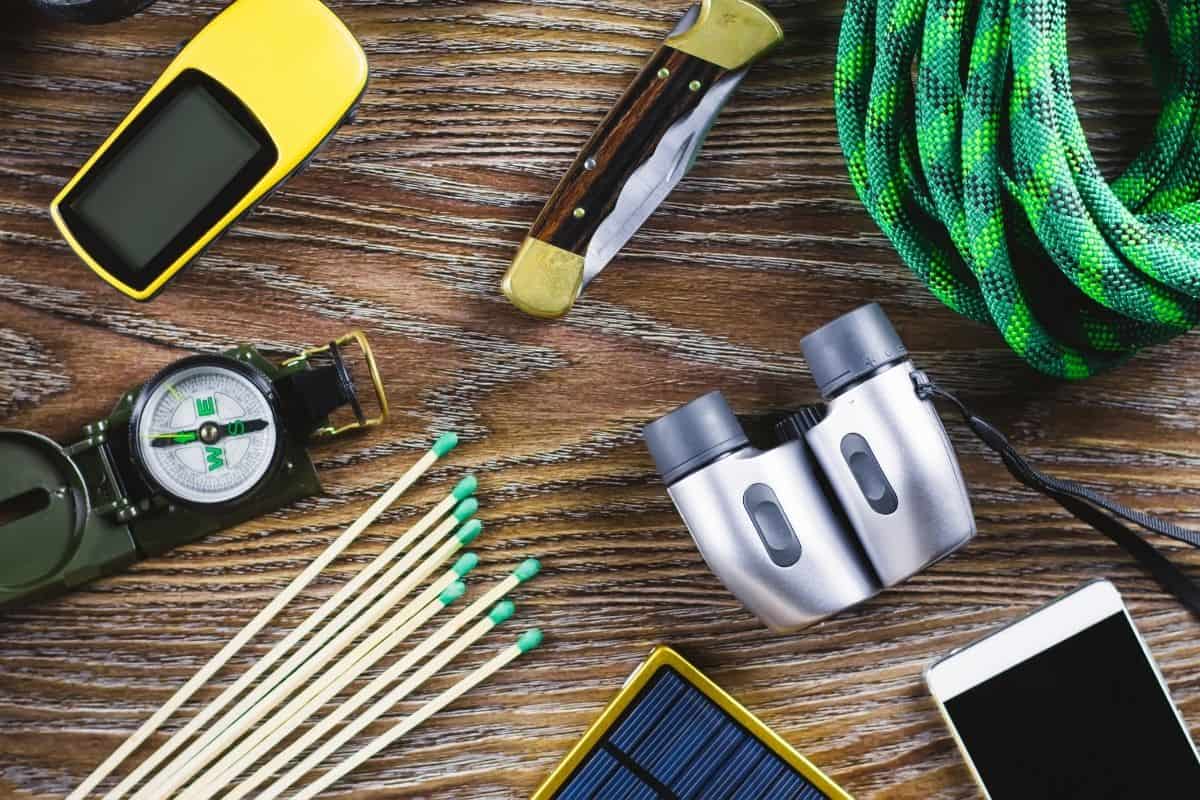
- Making Booby Traps
- How to Use a Compass
- How to Read a Map
- Basic Self Defense
- Signaling (if you’re lost)
- How to Make Shelter
- Handling Wildlife Encounters – Remember the bears in Little House in the Big Woods?
- Learn Weather Forecasting
- Preparation for Dangerous Weather Patterns (wildfires, tornadoes, blizzards, etc.)
- Build a Survival Kit – make sure you’re prepared for emergencies!
- How to Stay Calm – Essential for being able to handle unexpected emergencies, losses, or disruptions.
- Pack a Bug Out Bag
- Learn how to identify the difference between harmless and venomous snakes
- Know Your Limits – be safe, or you may find yourself in a dangerous situation you aren’t equipped to handle.
Miscellaneous
- Sharpen Cutting Tools
- Auto Mechanic Skills – you need to be able to keep your vehicles in good working order.
- Learn to Prospect Gold
- Bartering
It is my sincere hope that this article has helped to inspire, encourage, and equip you for your own homesteading journey. If I’ve forgotten any important skills, please let me know in the comments. Happy Homesteading!


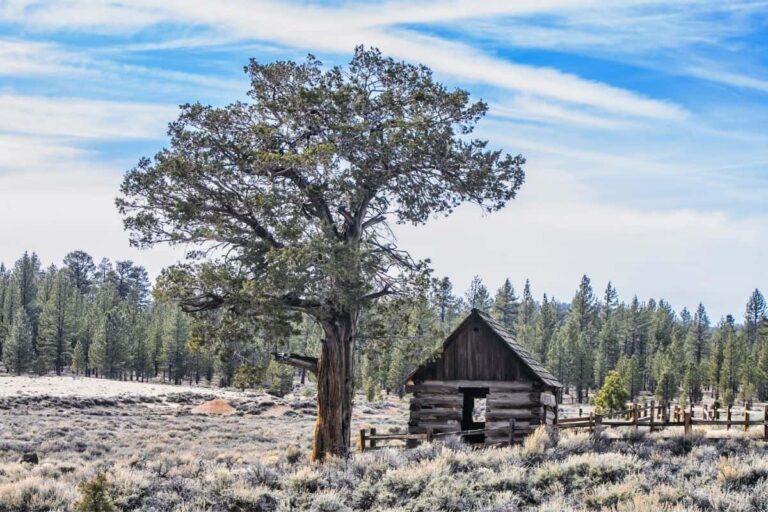

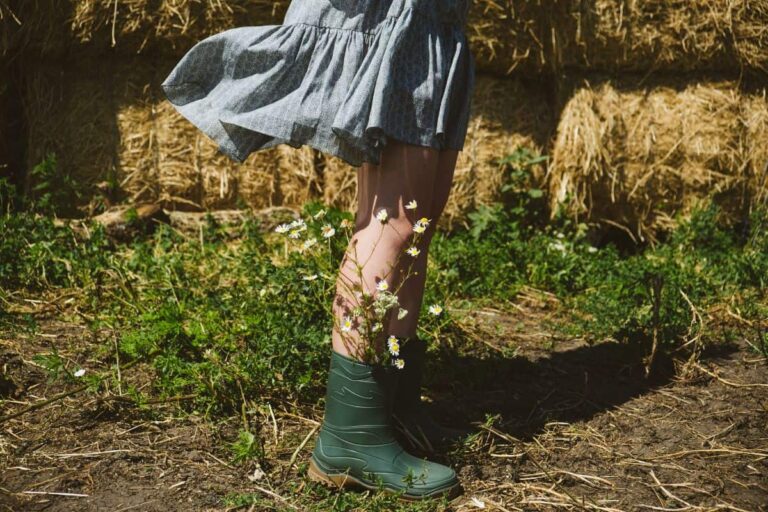



Awesome stuff!
I am so grateful for your time spent collecting, sorting, and sharing this information. It will now be my main reference list for our homestead. Very well done!!